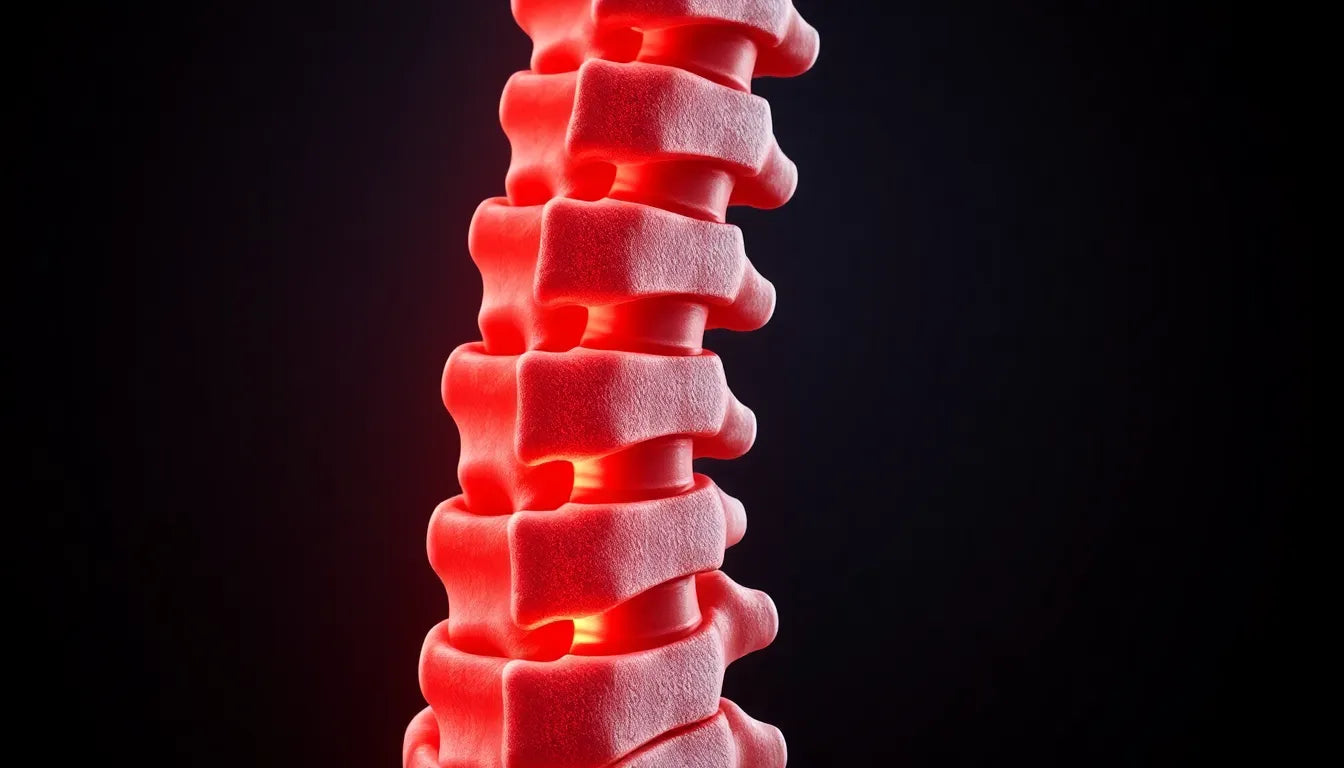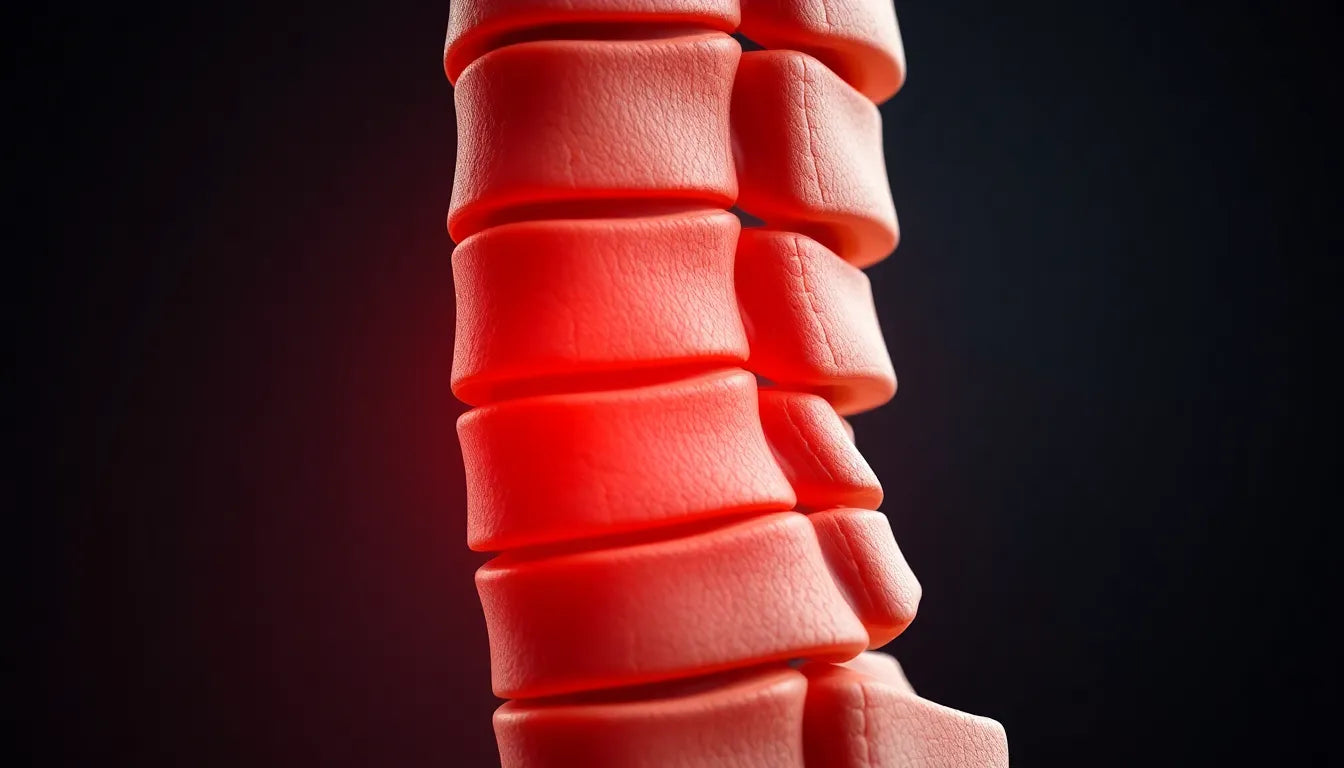Experiencing a herniated disc can be both painful and disruptive, affecting your daily routine and overall quality of life. Understanding what a herniated disc is and how it manifests is essential for seeking effective relief. A herniated disc occurs when the soft center of a spinal disc pushes through a crack in the tougher exterior casing. This condition can lead to symptoms such as back pain, numbness, and weakness, particularly if the disc presses on a nerve. While the idea of a definitive "cure" for a herniated disc might be misleading, many treatment options can significantly alleviate symptoms and enhance your quality of life.
understanding herniated discs
The spine is composed of a series of bones called vertebrae, cushioned by discs that act as shock absorbers. When a disc herniates, its inner gel-like core leaks out, potentially irritating nearby nerves. This can result in discomfort and a range of symptoms, including sharp pain, tingling, and even muscle weakness. These symptoms can vary in intensity, depending on the severity of the herniation and the specific nerves affected.
While it's natural to seek a quick fix, it's important to recognize that managing a herniated disc often involves a combination of strategies rather than a single treatment. The goal is to find a balance of therapies that work for you, providing relief and enabling you to maintain a functional, active lifestyle.
the importance of a comprehensive approach
Addressing a herniated disc effectively requires a comprehensive approach that integrates various treatment modalities. This may include a mix of non-surgical options such as physical therapy, medication, and lifestyle adjustments, alongside potential surgical interventions for more severe cases. By understanding the array of available treatments, you can make informed decisions about your care and work towards finding the most effective solution for your needs.
The purpose of this blog post is to explore the diverse treatment options for herniated discs, guiding you through the possibilities and helping you discover the path to relief. Whether you're dealing with mild discomfort or more pronounced symptoms, understanding your options is the first step toward managing your condition and improving your quality of life.
non-surgical treatments for herniated discs
When it comes to managing a herniated disc, non-surgical treatments are often the first line of defense. These conservative approaches aim to alleviate symptoms and improve functionality without the need for invasive procedures. Let's delve into some of the most effective non-surgical options available.
rest and activity modification
Initially, modifying your activities can significantly reduce the strain on your spine. While it might seem counterintuitive, maintaining a level of activity is crucial. Prolonged bed rest can lead to stiffness and muscle weakness, potentially exacerbating the condition. Instead, focus on gentle movements and avoid activities that trigger pain, gradually increasing your activity level as symptoms improve.
medication
For many individuals, medication plays a vital role in managing the pain and inflammation associated with a herniated disc. Over-the-counter nonsteroidal anti-inflammatory drugs (NSAIDs) like ibuprofen can provide relief, while prescription options, including stronger pain relievers and muscle relaxants, may be necessary for more severe cases. It's important to remember that while these medications can alleviate symptoms, they do not address the underlying cause of the herniation.
physical therapy
Physical therapy is a cornerstone of non-surgical treatment for herniated discs. A tailored exercise program can strengthen the muscles supporting the spine, enhance flexibility, and reduce nerve compression. Commonly recommended exercises include pelvic tilts, knee-to-chest stretches, and core strengthening routines. A physical therapist can guide you through these exercises, ensuring proper form and progression.
alternative therapies
In addition to traditional methods, alternative therapies such as chiropractic care, acupuncture, and spinal manipulation have gained popularity. While evidence supporting their effectiveness varies, some patients report symptom relief. These therapies are typically used in conjunction with other treatments rather than as standalone solutions.
spinal decompression
Spinal decompression therapy is an innovative non-surgical option that involves gently stretching the spine to relieve pressure on the affected disc and nerves. This therapy can help reposition the herniated disc, promoting healing and reducing pain. While not suitable for everyone, it offers a promising alternative for those seeking non-invasive relief.
epidural steroid injections and other interventions
For individuals experiencing severe or persistent pain, epidural steroid injections can provide significant, albeit temporary, relief. These injections target inflammation around the nerve roots, reducing pain and swelling. Additionally, newer interventions like percutaneous neurolysis are emerging as options for cases where traditional conservative measures fall short. These procedures focus on breaking down scar tissue and adhesions, offering potential relief for select patients.
surgical treatments for herniated discs
When conservative treatments fail to provide adequate relief, surgical interventions may be considered. Surgery is typically reserved for cases with persistent symptoms or significant neurological impairment. Let's explore some of the surgical options available.
discectomy and microdiscectomy
Discectomy and microdiscectomy are minimally invasive procedures aimed at removing the herniated portion of the disc. These surgeries relieve nerve pressure, alleviating pain and restoring function. The minimally invasive nature of these procedures often results in shorter recovery times compared to traditional open surgery.
disc replacement
In severe cases, artificial disc replacement may be considered. This procedure involves replacing the damaged disc with a prosthetic implant, aiming to maintain spinal mobility and reduce pain. While not suitable for everyone, disc replacement offers a viable option for those with recurrent or severe herniations.
lifestyle and wellness for herniated disc management
Supporting recovery and preventing recurrence of a herniated disc often involves lifestyle modifications. Maintaining a healthy weight, practicing proper posture, and avoiding smoking can significantly reduce the risk of future disc issues. Incorporating regular exercise and ergonomic adjustments into your daily routine can also support spinal health and overall well-being.
By understanding and exploring these various treatment options, you can take proactive steps towards managing your herniated disc and improving your quality of life. Whether through non-surgical methods, surgical interventions, or lifestyle changes, relief is possible with the right approach.
stepwise approach to herniated disc treatment
When addressing a herniated disc, it's crucial to follow a stepwise approach, beginning with conservative treatments and progressing to more invasive options only if necessary. This method not only prioritizes safety but also allows for individualized care plans tailored to each patient's unique needs. Initially, non-surgical interventions such as rest, physical therapy, and medication are recommended. If these do not provide sufficient relief, more advanced therapies like spinal decompression or epidural injections may be considered. Surgery is generally reserved for cases where conservative measures have failed or if there is significant neurological impairment.
the role of ergonomic aids in managing herniated discs
Incorporating ergonomic aids can significantly enhance the management of herniated discs, particularly in reducing strain and promoting proper posture. Ergonomic chairs, standing desks, and supportive pillows can alleviate pressure on the spine during daily activities, contributing to overall comfort and symptom relief. These aids not only support conservative treatment efforts but also play a vital role in preventing future disc issues by encouraging healthy posture and movement patterns.
frequently asked questions
What is the fastest way to relieve herniated disc pain?
Immediate relief from herniated disc pain can often be achieved through a combination of rest, ice or heat therapy, and over-the-counter pain medications like NSAIDs. These methods help reduce inflammation and alleviate discomfort, providing temporary relief while longer-term treatment plans are developed.
Can a herniated disc heal on its own?
Many herniated discs improve over time with conservative treatment, as the body gradually absorbs the herniated material. However, the extent of healing can vary, and some individuals may continue to experience symptoms. Consistent management through physical therapy and lifestyle changes can significantly aid the healing process.
When should I consider surgery for a herniated disc?
Surgery for a herniated disc is typically considered when conservative treatments fail to relieve symptoms, or if there is significant nerve damage leading to weakness or loss of function. It is essential to consult with a healthcare provider to determine the best course of action based on individual circumstances.
Is physical therapy effective for herniated discs?
Physical therapy is highly effective for managing herniated discs, as it focuses on strengthening the muscles that support the spine, improving flexibility, and reducing nerve compression. A well-structured physical therapy program can alleviate symptoms and prevent further injury.
How can I prevent herniated discs in the future?
Preventing future herniated discs involves maintaining a healthy lifestyle, including regular exercise, proper posture, and ergonomic adjustments in daily activities. Weight management and avoiding smoking also play crucial roles in reducing the risk of disc issues. Incorporating these habits can support spinal health and overall well-being.
Sources
- Mayo Clinic. "Herniated disk: Diagnosis and treatment."
- Cleveland Clinic. "Herniated Disk (Slipped or Bulging Disk)."
- Dr. Likover. "Treatment Options for a Herniated Disc."
- WebMD. "Herniated Disk Treatment, Remedies, and Medications."
- Northeast Spine & Sports. "What Is the Best Treatment for a Herniated Disc?"
- PMC. "Management of Lumbar Disc Herniation: A Systematic Review."
- Cuéllar Spine. "Herniated Disc Treatment Options."


















